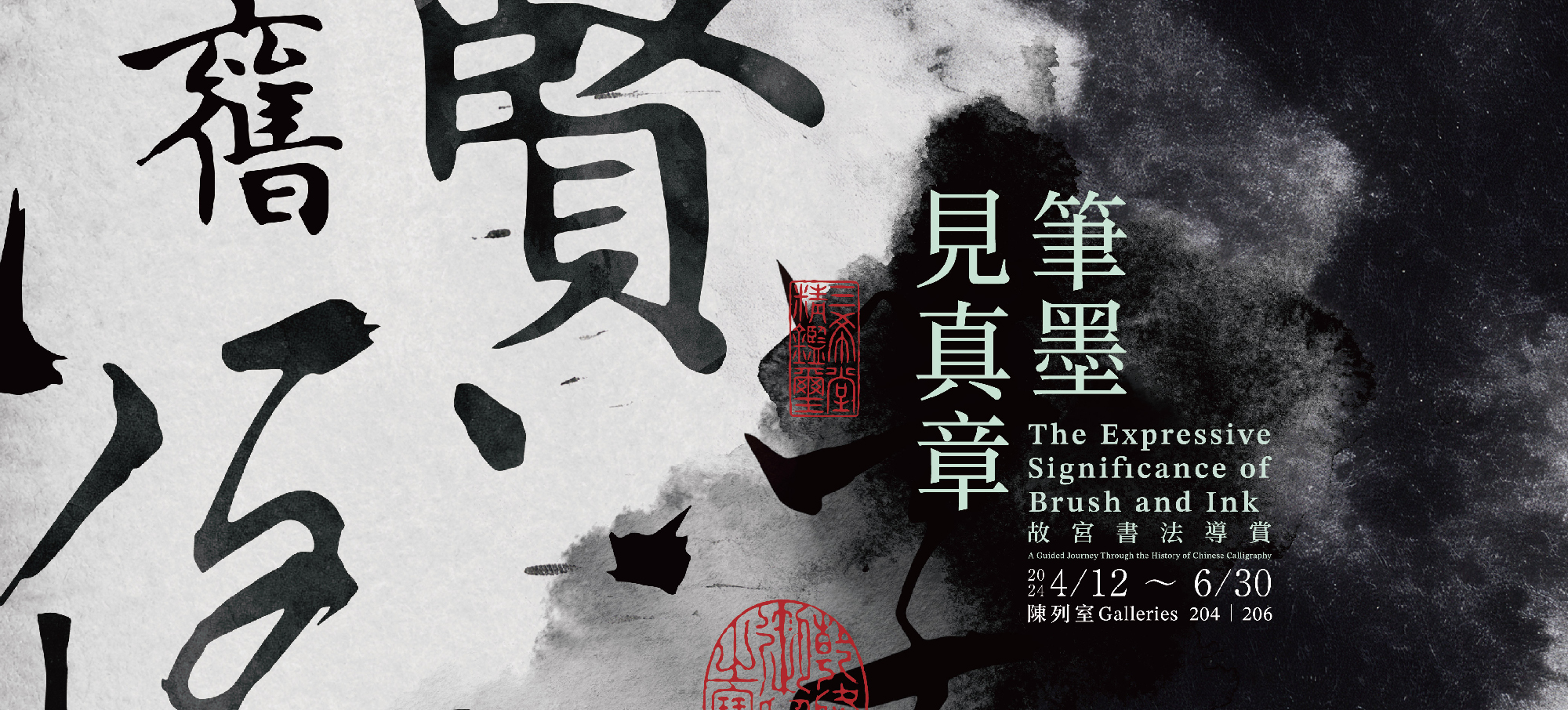Selections
-
Works by Calligrapher Poets Yuan to Ming Dynasty
Paper (the f irst piece) and Silk (the second to eighth pieces)
This scroll collects calligraphy artworks of eight individuals from the Yuan and Ming dynasties. Besides Zhao Mengfu (1254-1322), other people have very few existing pieces nowadays. The selected works of Yao Shu (1203-1280) and Zhang Zhu (1287-1368) were letters that ref lected the social interactions between literati. The ‘Treatise of Brushes’ by Zhou Boqi (1298-1369) stated the theory of calligraphy study. The calligraphy works of Zhao Mengfu, Gong Su (1266-1331), Yang Ji (1332-?), and Song Ke (1327-1387) were poems and literature; among all, the preface in cursive script by Wang Feng (1319-1388) for his friend demonstrated the characteristic of calligraphy in the later period. The pieces mentioned above with diverse contents not only deliver dif ferent meanings, but the calligraphy style also expresses the uniqueness of each person.
-
Song Poetry in Seal Script Chang Biao, Song Dynasty
Paper
Song Poetry in Seal Script Chang Biao, Song Dynasty Paper Chang Biao (active in the early 13th century) has unknown biographical information. This album was writ ten in three sections in the 3rd year of Baoqing reign (1227). The f irst part, writ ten in small seal script, stated the 'Shoubian' by Su Shi. The second part has the 'Preface of Valley', writ ten in the style of bronze inscriptions; each brushstroke has a fuller middle section narrowing down on both ends. The third part has the 'Poem of Red and White Lotus' written in small seal script, imitating the style of Li Yangbing (unknown biographical information) from the Tang dynasty; the calligraphy shows a robust and archaic quality. This album is the only existing work of Chang Biao, and it is also a rare and exquisite work of calligraphy in seal script from the Southern Song dynasty. Chang Ning (active in 1554-1588) from the Ming dynasty made the postscript for this album in 1480. Seal script is an ancient calligraphic form in China, due to differences over time and place, many variations emerged.
-
Miscellaneous Poetry Wang Chong, Ming Dynasty
Paper
Wang Chong (1494-1533), style name Luren and Luji, sobriquet Yayi Shanren, was a native of Changzhou (now Suzhou, Jiangsu) and enrolled in the Imperial Academy. Wang later gained recognition with Zhu Yunming and Wen Zhengming together, and they were praised as the “Three Masters of Wu,” which refers to Suzhou. This handscroll features poetry expressing admiration for Shihu and Baoshan, scenic areas near where Wang Chong lived, as well as sudden longing. The characters are formed in an introverted manner with little expansiveness. The turns to the strokes also have a rounded fluidity; the left and right diagonal extensions of characters done with a quick ending force, giving the piece a sophisticated dynamic. Even though this work is written in cursive script, there are rarely any connecting strokes; , which are clean and precise to express a hard yet simple uprightness.
-
‘Preface to the Prince Teng Pavilion’ by Wang Bo of the Tang Dynasty in Cursive Script Wen Peng, Mi
Paper
Wen Peng (1498-1573), style name Shoucheng, sobriquet Sanqiao, was a native of Suzhou, Jiangsu Province. Wen studied literature, painting, and calligraphy under his father, Wen Zhengming(1470-1559); his remarkable talent and continuous ef forts contributed to his extraordinary accomplishments. Wen Peng excelled at dif ferent calligraphy scripts and was exceedingly expert in his expression in cursive script; not only could he do archaic style from the Wei and Jin dynasties, but he also could break the boundaries and write cursive scripts on large scales freely.
This album leaf recorded the legendary masterpiece, ‘Poetry Preface of Duke Teng’s Pavilion’, done by Wang Bo (649-676) from the Tang dynasty; the practice of calligraphy shows precisely the style of Wang Xizhi (303-361) and Wang Xianzhi (344-386), and the emotion embedded in each brushstroke delivers an elegance that parallels to Wen Zhengming. -
To the Accompaniment of Tao’s Drinking Poems Zhu Yunming, Ming Dynasty
Paper
Zhu Yunming (1460-1526), style name Xizhe, sobriquet Zhishan, was a native of Suzhou Province. Zhu was a f irst-grade scholar when he was 33 years old, and at 55, he served as the District Magistrate of Xingning, Guangdong; Zhu later got promoted to the Yingtian Superior Prefecture as the Assistant Prefect. Zhu’s calligraphy took models from ancient masters extensively, thus explaining his various styles.
Zhu had written this album at 66 years old. However, the contents were his favoured poems done when he was 40. The small regular scripts have f lat tened structures, with round dots and shortened brushstrokes that originated from the regular script of Zhong You (151-230). The calligraphy of this album takes on the flowing spirit of running script, combined with regular and zhangcao cursive scripts. The steady and clean brushstrokes contribute to the excellent structure of each character, and the shapes of the let ters deliver variations and movements; it stands as the merit work of zhangcao cursive script from the Ming dynasty.


